Glacier des Bossons and Glacier de TaconnazGlacier des Bossons near Chamonix has the greatest altitudinal extent of all glaciers in the Alps. Its highest point is the summit of Mont Blanc (at 4807 m.a.s.l. the highest peak in the Alps). In 1900 the glacier terminus still was at the valley bottom at 1050 m.a.s.l.; in 1980 it terminated at approximately 1200 m.a.s.l. and in 2008 just below 1400 metres, in other words still well below the treeline. Several repeat photos below illustrate the glacier's recession. The glacier is still about 7.5 kilometres long and has a surface area of nearly 10 square kilometres. |
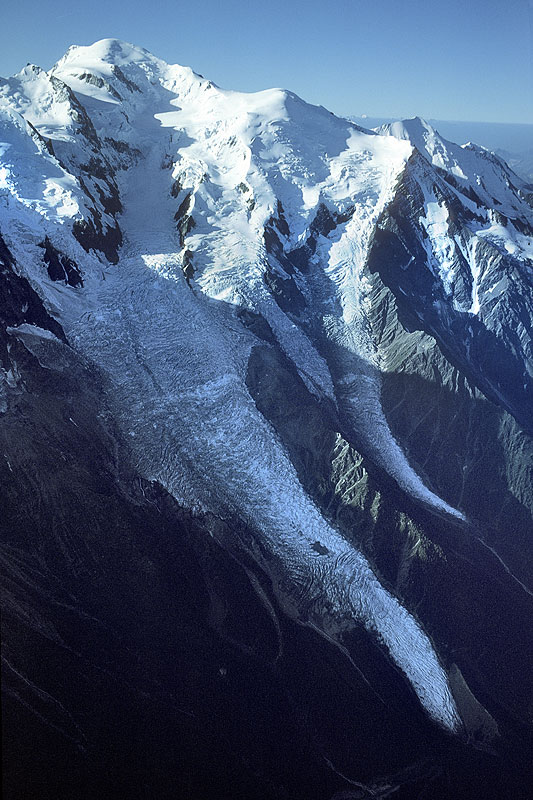 Aerial photo of Glacier de Bossons from the north, Glacier de Taconnaz on the right. Both have remarkably bright tongues due to advection of cold, bubble-rich ice from the extremely high altitude accumulatin areas (11. Aug. 1982, JA). | 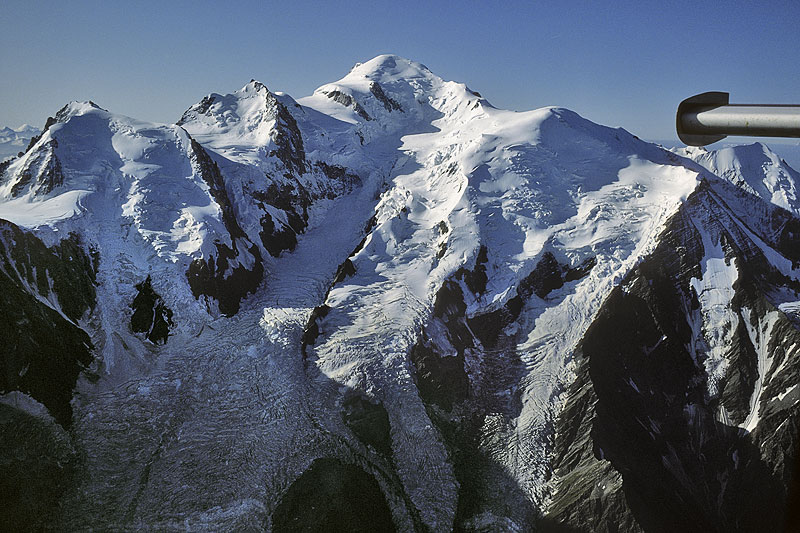 Aerial photo of Mont Blanc with the accumulation area of Glacier de Bossons at centre and left, and Glacier de Taconnaz right. On the far right, below the plane's rudder, is the small and very steep Glacier de Bourgeat (11. Aug. 1982, JA). | 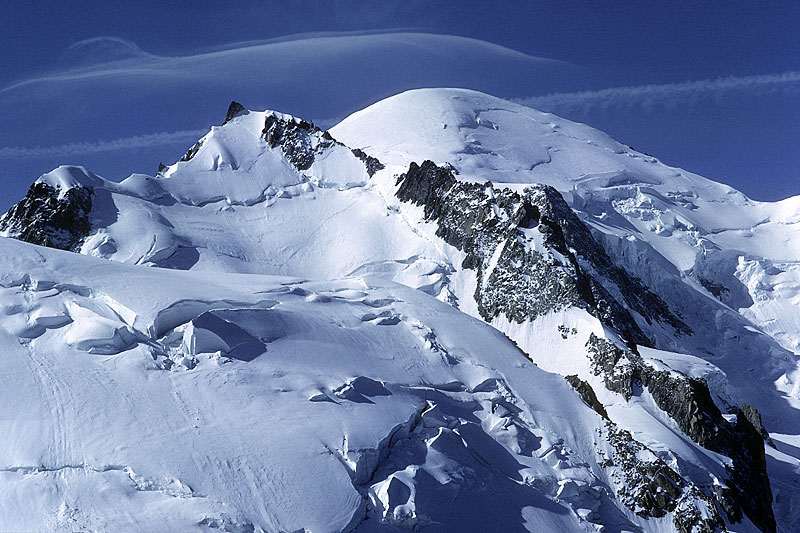 Summit of Mont Blanc as seen from Aiguille de Midi (3842m.a.s.l., acessible by cable car). Traces from small ice avalanches are visible on the lower left (20. Juli 1982, JA). | 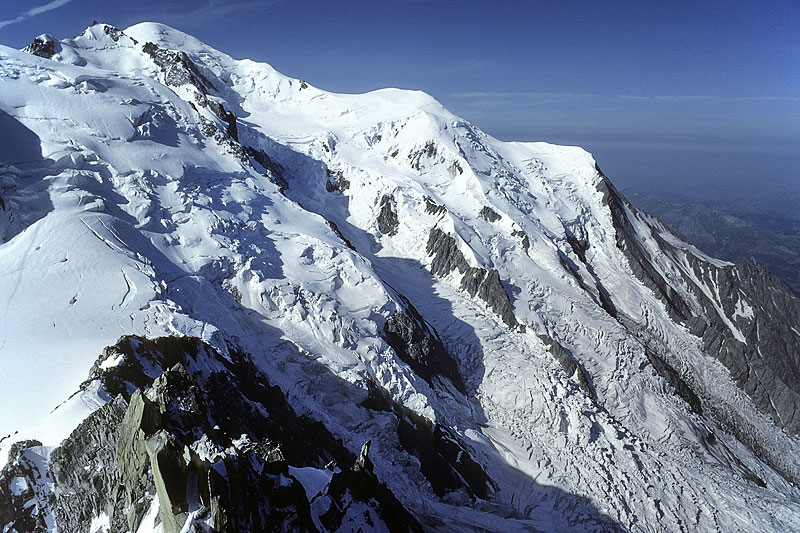 Accumulation area of Glacier de Bossons (foreground and centre) and of Glacier de Taconnaz (right) as seen from Aiguille de Midi (20. Juli 1982, JA). |
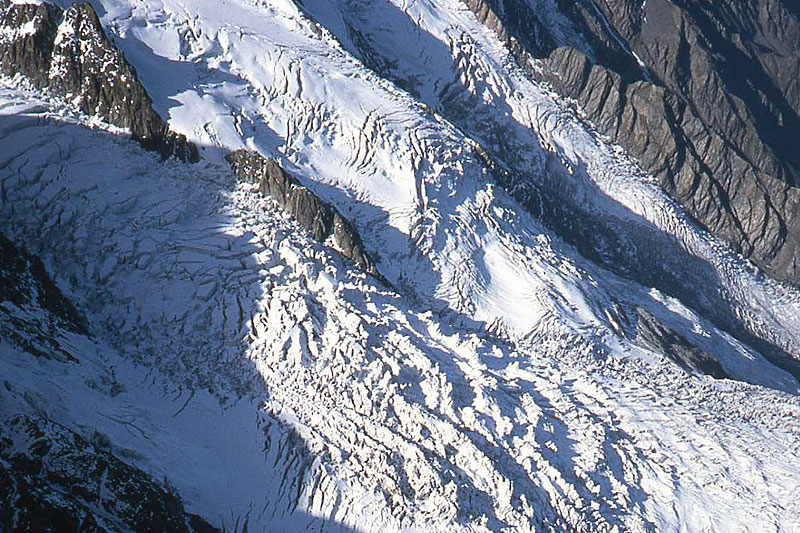 Repeat photo A1: Heavily crevassed central part of Glacier de Bossons (11. Sept. 1992, JC). | 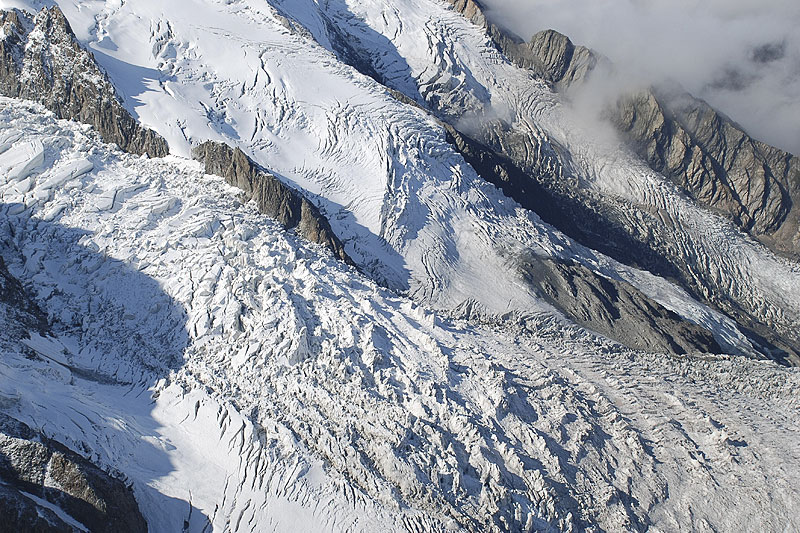 Repeat photo A2: Thinning of the glacier is particularly obvious around the exposed bedrock on the right (7. Sept. 2008, JC). | 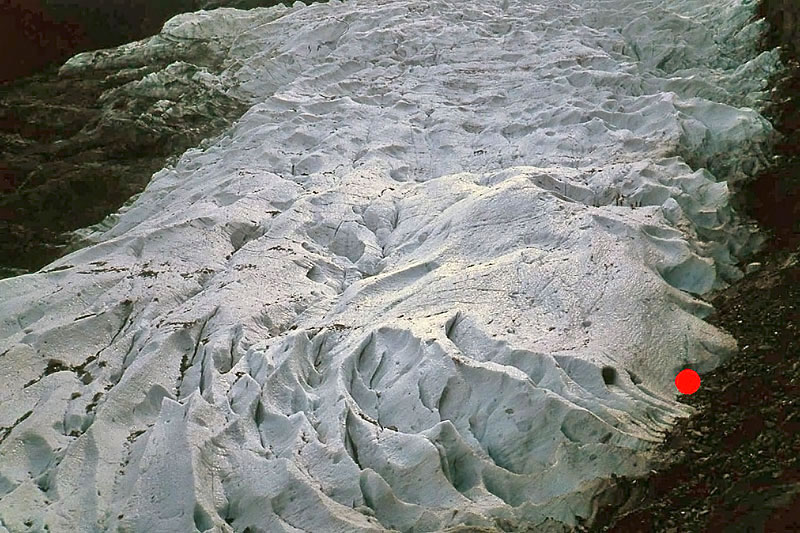 Repeat photo B1: Tongue of Glacier de Bossons. Note entrance to artifical ice tunnel left of the red dot (10. Sept. 1992, JC). | 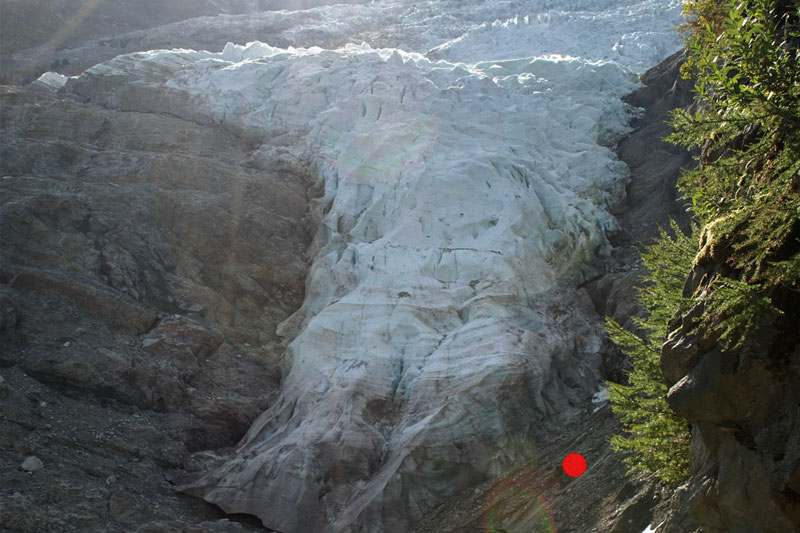 Repeat photo B2: The tongue has receeded strongly; it is no longer possible to make ice tunnels for tourists at this location (9. Sept. 2008, JC). |
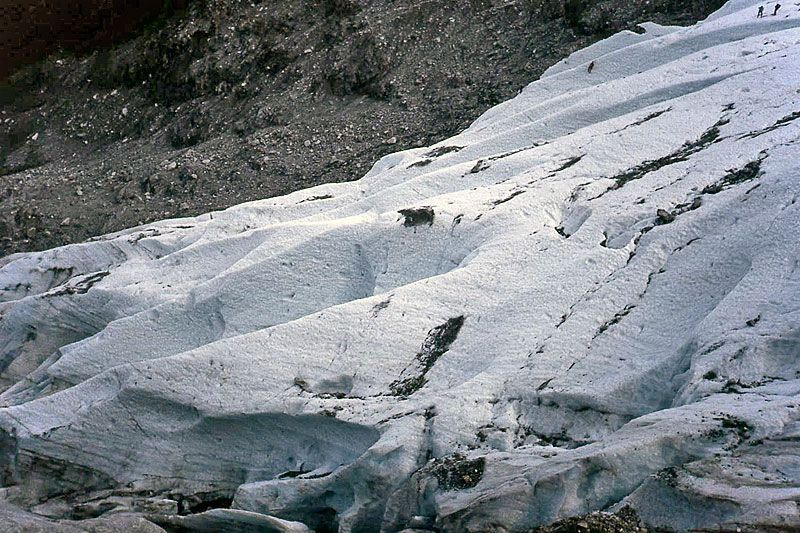 Repeat photo C1: Glacier tongue; note two climbers on the far upper right (10. Sept. 1992, JC). | 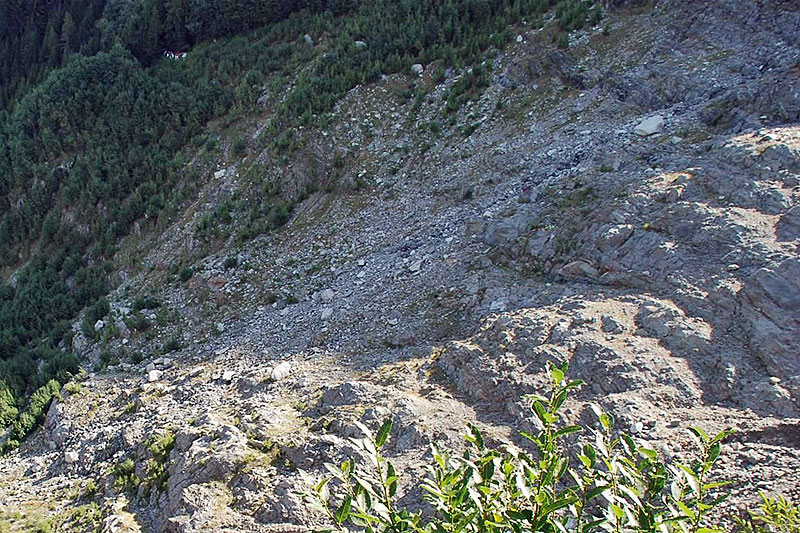 Repeat photo C2: At the same location there is no ice left at all (9. Sept. 2008, JC). | 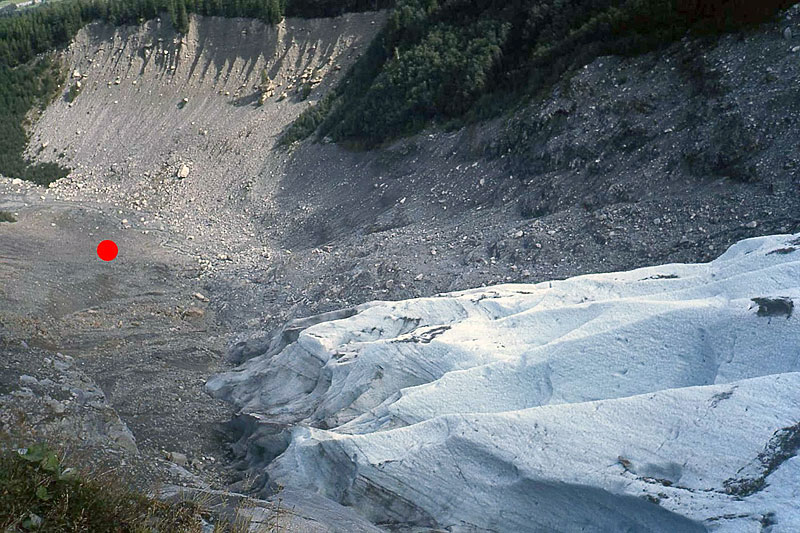 Repeat photo D1: Small alluvial plain in front of the glacier tongue. On the upper left is the tall moraine from the Little Ice Age (10. Sept. 1992, JC). | 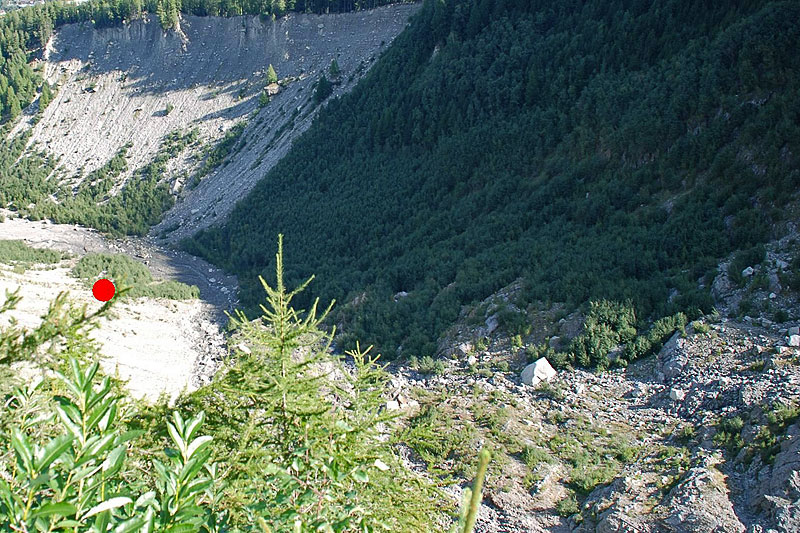 Repeat photo D2: Both, on the alluvial plain, and on the slopes of the lateral moraine dense vegetation cover has grown (9. Sept. 2008, JC). |
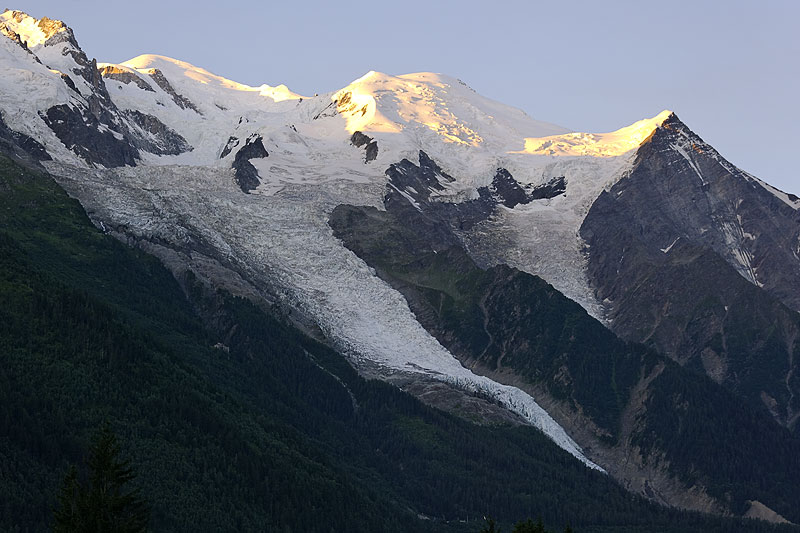 View of Mont Blanc, Glacier de Bossons and Glacier de Taconnaz (right) from Chamonix just after sunrise. Note the bright colour of Glacier de Bossons' tongue (Aug. 2009, JA). | | | |
| On November 3rd, 1950 an aeroplane crashed, killing 48 people. Amazingly, on January 24th, 1950 such a tragedy happened again, on the same glacier, this time with 117 people on board, all of whom lost their lives - in both cases the planes were operated by Air India. By now the debris of the crashes has migrated from the accumulation to the ablation area. Repetedly objects were found melting out of the glacier ice. Photos Jordi Camins (JC) and Jürg Alean (JA). |